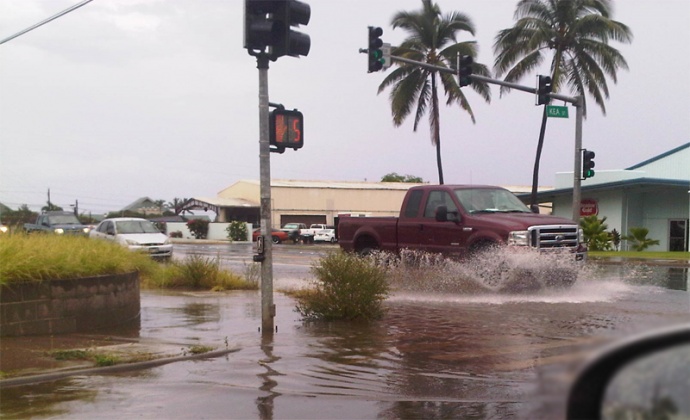Wet Season Outlook Calls for “Some” Drought Recovery
By Wendy Osher
The wet season outlook for Maui County calls for some drought recovery, according to a forecast released by the National Weather Service for the period from October 2013 to April 2014.
The outlook, prepared by NOAA Senior Hydrologist Kevin Kodama, says that while “some recovery is expected,” a “full recovery may not occur due to the intensity and longevity of existing drought conditions.”
During the dry season, which ran from May to September, 2013, forecasters said many sites “from Kauaʻi to Maui had near to above average rainfall totals, but the Big Island was dry overall, especially in the leeward areas.
In Maui County, forecasters said “Severe drought” (D2 category) to “Extreme drought” expanded from the Kīhei area into the Upcountry section of the island during the dry season.
A 20% voluntary water restriction for Upcountry residents was implemented on Oct. 30, but lifted just two weeks later on Nov. 13, 2013, when recent rains brought reservoirs back to safe levels.
Those rains included a record rainfall set in Kahului on Sunday, Nov. 10, with more than 3.5 inches of rain reported over a 24-hour period in Kahului, sinking the old record of 1.78 inches set in 1955, compared to the same date in previous years.
The National Oceanic and Atmospheric Administration’s Climate Prediction Center reported ENSO-neutral, neither El Nino or La Nina conditions, present for over a year, with similar conditions expected to persist into the spring of 2014.
The west season outlook calls for near to above average rainfall through early 2014, with “long-range probabilities,” that suggest an early start to the 2014 dry season.
In preparation for the wet season, the National Weather Service and NOAA issued the following reminders:
- Do not drive on roads with fast-flowing water or cross flooded streams
- Clean gutters and drainage ditches
- If you live in a flood-prone area, identify your evacuation routes ahead of time
- Plan for more rainy weather impacts
- Increased road travel times or possible detours due to flooding
- Outdoor activities may be postponed, canceled, or adjusted
- The wet season always brings increased potential for lightning strikes
- Be prepared for power outages
- Move indoors during a thunderstorm
- Monitor media, NOAA Weather Radio, and internet sources for changes in weather conditions










